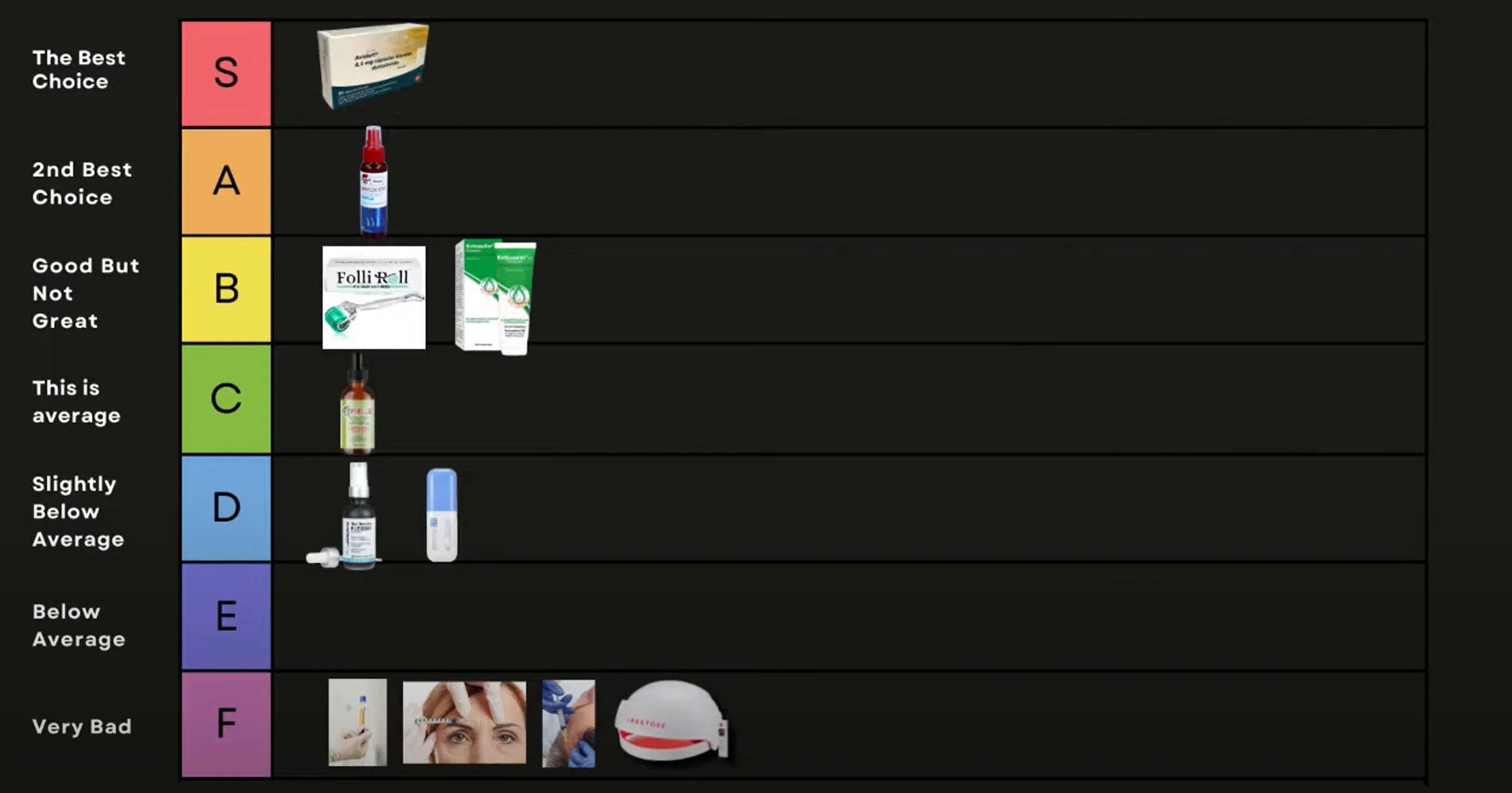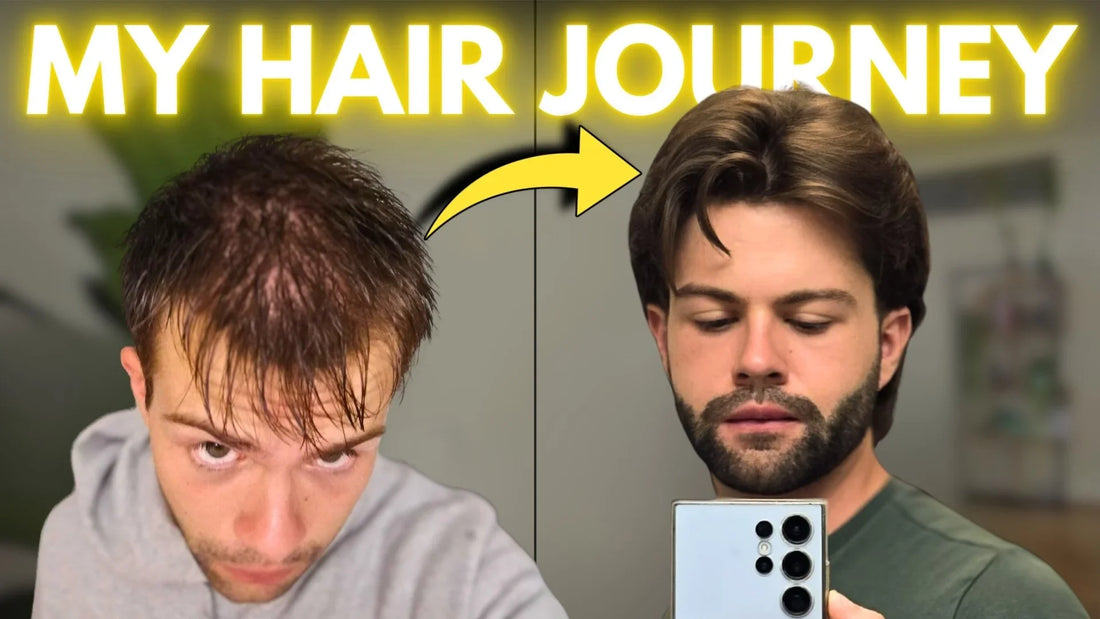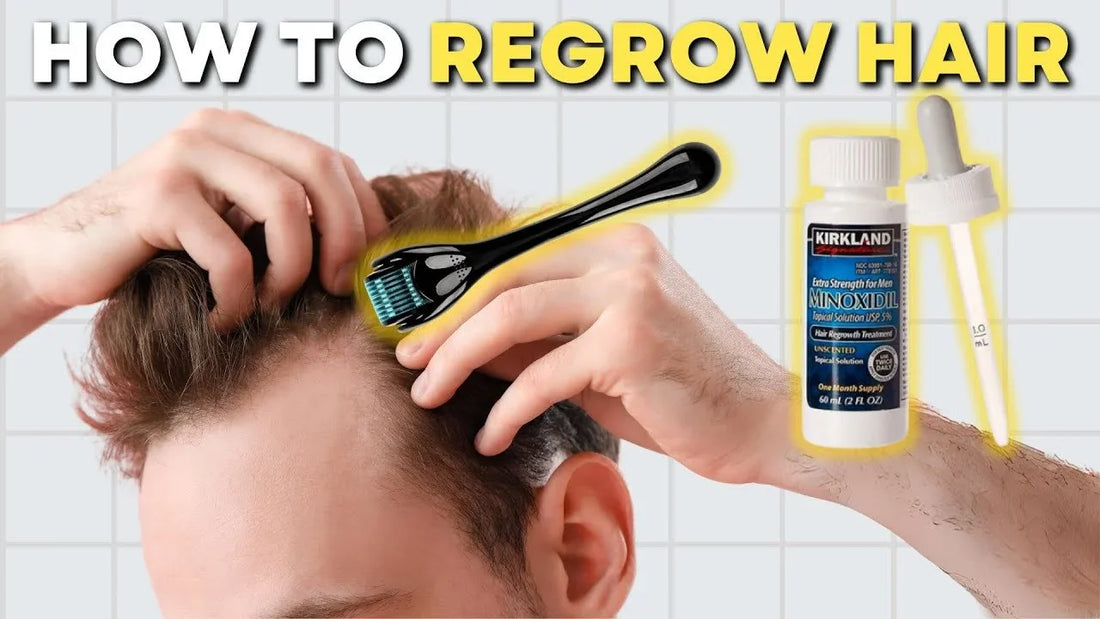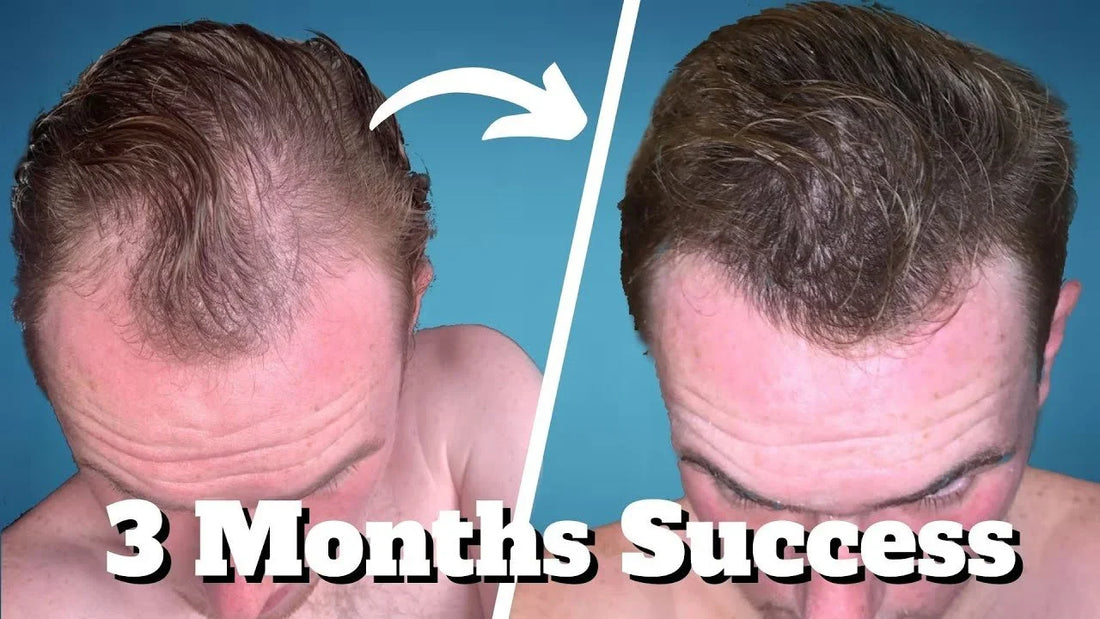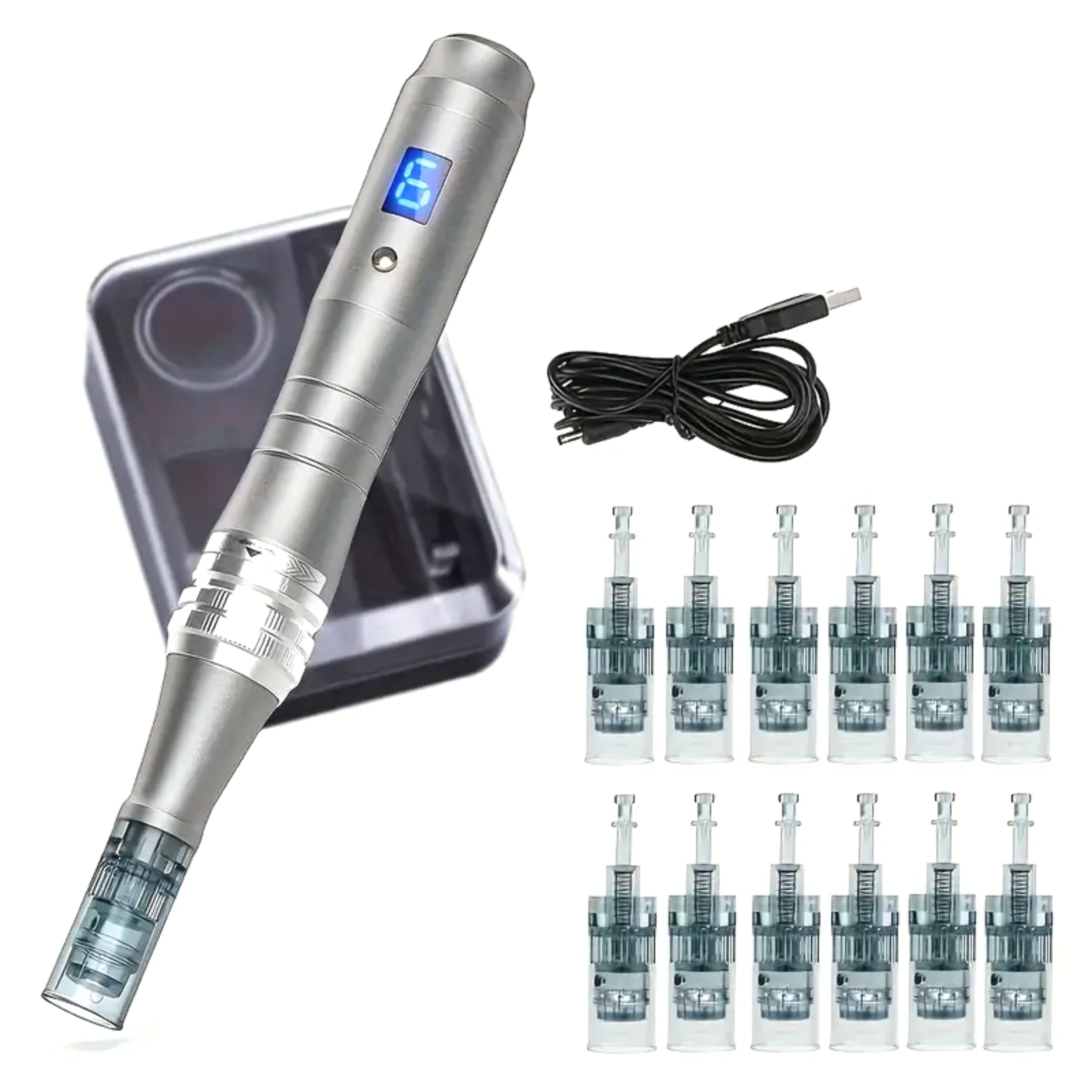When it comes to addressing hair loss, numerous products promise results, but not all live up to their claims. Having restored my hair using some of these treatments, I want to help you navigate your options by evaluating their effectiveness, safety, price, and accessibility.
1. Minoxidil

Minoxidil bottle 5% for hair loss (Kirkland).
Effectiveness: 10/10
Minoxidil (Rogaine) is a proven vasodilator that stimulates hair growth, making it one of the best options available. Many users, including myself, have seen impressive results in as little as three months.
Safety: 8/10
FDA-approved and generally safe, Minoxidil can cause side effects like heart palpitations if used excessively. Stick to the recommended 1-2 ml daily.
Price: 9/10
Costs around $20/month for branded versions, with cheaper options like Kirkland at just $5/month.
Accessibility: 10/10
Widely available online and in pharmacies.
2. Derma Roller

Derma roller for hair loss (FolliRoll).
Effectiveness: 5/10
The derma roller creates micro-injuries to the scalp, promoting collagen production. Alone, it yields limited results, but combining it with Minoxidil can enhance effectiveness significantly.
Safety: 7/10
While generally safe, improper use can lead to scarring. A needle length of 0.3 to 1.5mm is advisable.
Price: 10/10
Typically priced between $10 and $20, I recommend a quality option like FolliRoll.
Accessibility: 6/10
Available online, but not commonly found in drugstores.
3. Finasteride and Dutasteride
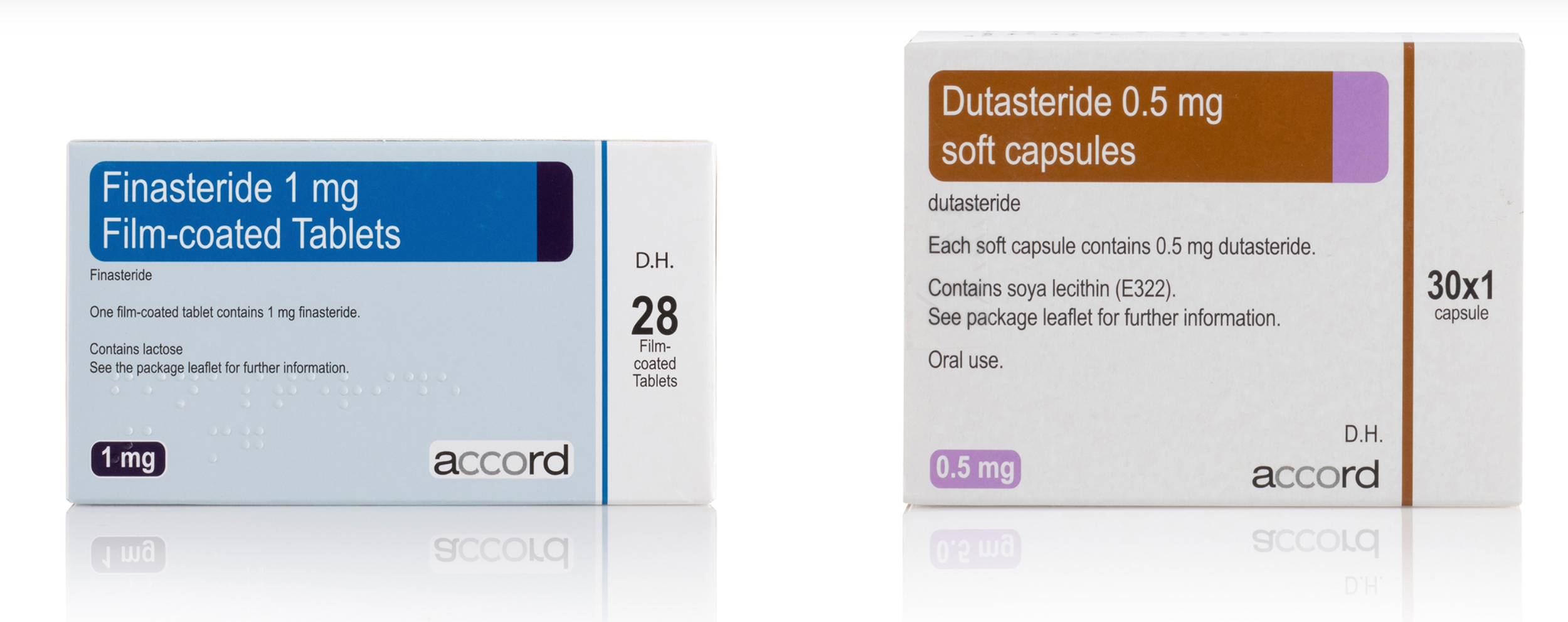
Finasteride and dutasteride for hair loss (generic brand).
Effectiveness: Finasteride: 8/10, Dutasteride: 9/10
These DHT blockers are well-researched and effective for preventing hair loss. Dutasteride tends to yield slightly better results.
Safety: 7/10
Some users experience sexual side effects, but the overall incidence is low.
Price: 8/10
Usually around $20/month, depending on location.
Accessibility: 6/10
Requires a prescription, making it less accessible than over-the-counter options.
4. Anti-androgens (RU5884 and Pyrilutamide)

Anti-androgens for hair loss (RU5884 and Pyrilutamide).
Effectiveness: 6/10
These topical treatments block DHT at the receptor level. Results are variable and often lack substantial evidence, but some studies suggest potential effectiveness for androgenetic alopecia.
Safety: 8/10
Topical application minimizes systemic side effects. Users report fewer adverse effects compared to oral medications.
Price: 0/10
At approximately $68/month, they're significantly more expensive than Minoxidil.
Accessibility: 4/10
Limited availability and often require online ordering, as they are not typically stocked in pharmacies.
5. PRP (Platelet-Rich Plasma) and Injectables
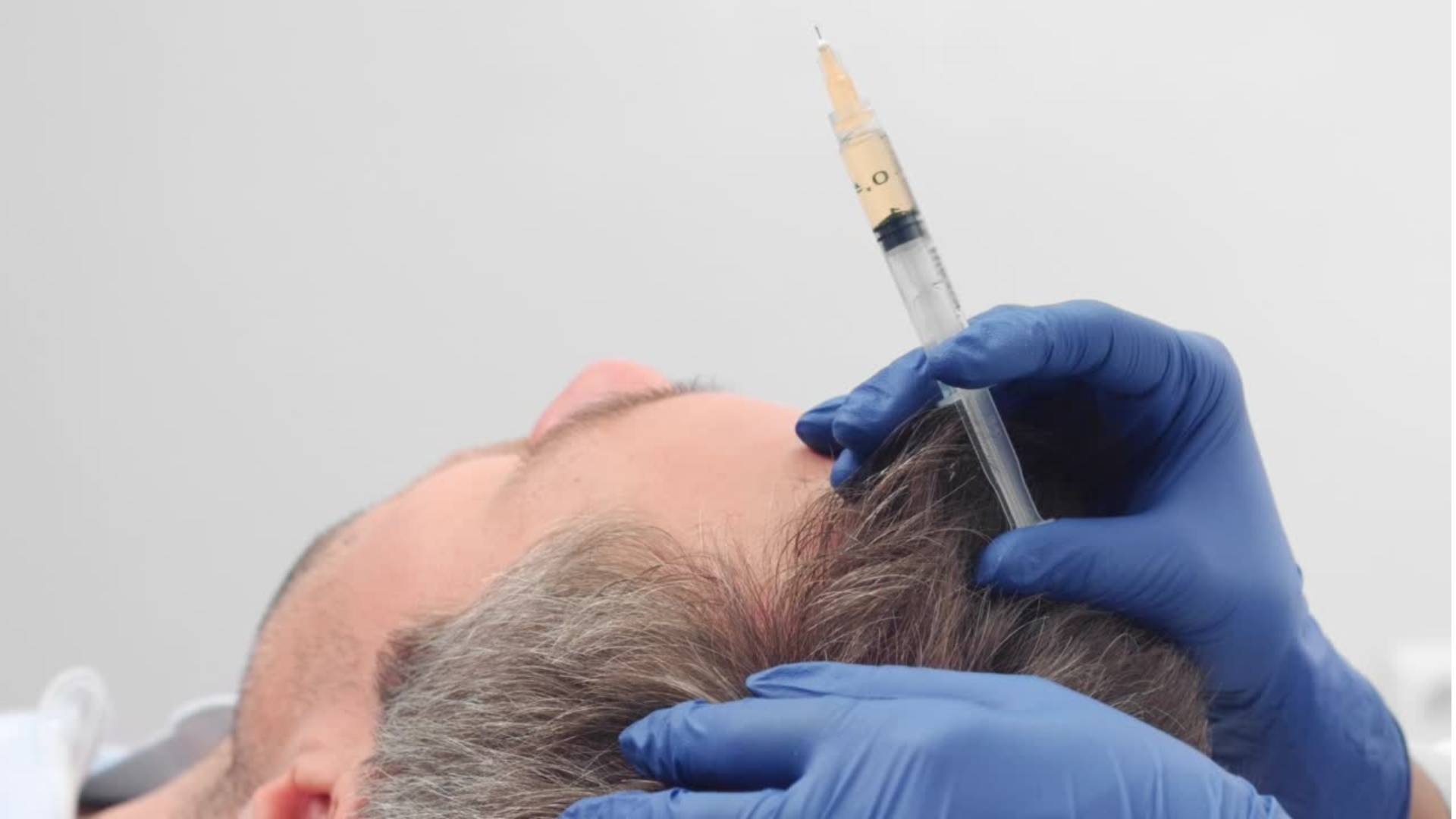
PRP (Platelet-Rich Plasma) and Injectables for hair loss.
Effectiveness: PRP: 4/10, Botox: 2/10, Mesotherapy: 4/10
PRP treatments use the patient’s own blood to stimulate hair growth, but results can be inconsistent. Botox may temporarily reduce scalp tension but has minimal impact on hair growth. Mesotherapy involves injecting vitamins and other substances into the scalp but lacks robust evidence supporting its efficacy.
Safety: 5/10
Injection carries risks of infection and discomfort, but when performed by a qualified professional, serious complications are rare.
Price: 0/10
PRP treatments can range from $1,500 to $3,500, making them prohibitively expensive. Other injectables also tend to be costly, often requiring multiple sessions.
Accessibility: 0/10
Require clinical visits, adding to the time and cost, which can be a barrier for many seeking treatment.
6. Ketoconazole Shampoo

Ketoconazole shampoo for hair loss (Nizoral).
Effectiveness: 6/10
Often used for dandruff, ketoconazole has antifungal properties that may help reduce scalp inflammation, indirectly benefiting hair growth.
Safety: 9/10
Generally safe for most people, though allergic reactions are possible.
Price: 8/10
Typically ranges from $10 to $20, depending on the brand.
Accessibility: 8/10
Available over-the-counter at pharmacies and online.
7. Rosemary Oil

Rosemary oil for hair loss (Mielle).
Effectiveness: 6/10
Some studies suggest that rosemary oil may be as effective as Minoxidil for stimulating hair growth, primarily due to its ability to improve circulation to the scalp.
Safety: 9/10
Generally safe, though skin irritation can occur in sensitive individuals.
Price: 10/10
Affordable, usually costing around $10 for a bottle.
Accessibility: 10/10
Readily available at health stores and online.
8. Laser Therapy

Laser treatment for hair loss (IRestore).
Effectiveness: 2/10
Laser devices claim to stimulate hair follicles and improve hair density, but results can vary widely among users.
Safety: 10/10
Non-invasive with minimal side effects reported.
Price: 0/10
Home devices can cost between $200 and $500, while professional treatments can be much higher.
Accessibility: 6/10
Home devices are available online, but professional treatments require clinic visits.
Conclusion
With a great variety of options available, it's crucial to focus on what works best for you. Minoxidil remains a top choice for its effectiveness, safety, and accessibility. Combining treatments like Minoxidil with a derma roller or DHT-Blockers can maximize results. Always consult with a healthcare professional before starting any new treatment.


